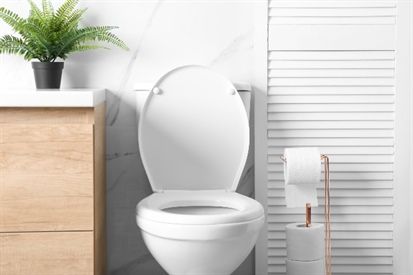What Causes Frequent Toilet Clogs? Ask a Drain Pro

Toilet clogs can disrupt your daily routine and cause significant frustration. They often seem to occur at the worst possible moments, leaving homeowners wondering about the underlying reasons.
The reality is that frequent toilet blockages can result from various factors, some preventable and others requiring professional assistance. By understanding these causes and taking proactive steps, you can minimize the chances of recurring problems.
This article will explore key questions surrounding common toilet clogging issues. We will cover topics such as the impact of flushing non-flushable items, strategies to prevent recurring blockages, how hard water affects toilet performance, the role of tree roots in sewer line clogs, and indicators that it may be time to replace your toilet.
Let's dive into these important issues to help you maintain a smoothly operating plumbing system!
Can Flushing Non-Flushable Items Cause Clogs?
Flushing non-flushable items is one of the leading causes of toilet clogs. Items such as wipes, feminine hygiene products, paper towels, and even "flushable" wipes can accumulate in pipes, causing blockages. Unlike toilet paper, which is designed to break down quickly in water, these materials often remain intact, leading to significant buildup over time.
To prevent such clogs, it is essential to educate household members about what should and should not be flushed. A simple rule of thumb is to flush only human waste and toilet paper. Keeping a waste bin near the toilet can also discourage improper flushing and reduce the risk of blockages.
If you suspect a blockage due to non-flushable items, it is advisable to contact a professional plumber. Addressing the issue promptly can prevent further damage to your plumbing system.
How Can I Prevent Recurring Toilet Blockages?
Preventing recurring toilet blockages involves adopting good habits and regular maintenance. Start by being mindful of what goes down the toilet. Avoid flushing anything other than toilet paper and human waste. Even products marketed as "flushable" can contribute to clogs over time.
Regular maintenance of your plumbing system can also help. Scheduling professional drain cleaning services can clear out any buildup and keep your pipes in optimal condition. Inspecting your sewer lines for issues like tree root intrusion or pipe damage can also address potential problems before they escalate.
Installing a high-quality toilet designed for efficient flushing can reduce the risk of clogs. These models are engineered to handle waste more effectively, minimizing the chances of blockages.
Does Hard Water Affect Toilet Performance?
Hard water can significantly impact toilet performance over time. Minerals such as calcium and magnesium in hard water can build up inside the toilet's internal components, reducing flushing efficiency. This mineral buildup, known as limescale, can also narrow the pipe diameters, increasing the likelihood of clogs.
To combat hard water issues, consider installing a water softener in your home. This device reduces mineral content in the water, preventing limescale buildup and prolonging the life of your plumbing fixtures. Regular cleaning of your toilet’s components can also help mitigate the effects of hard water.
In areas with particularly hard water, frequent maintenance may be necessary to ensure your toilet continues to function optimally. While hard water doesn’t directly cause clogs, its effects on the plumbing system can contribute to recurring blockages over time.
Can Tree Roots Clog Sewer Lines Leading to Toilets?
Tree roots are a common culprit for sewer line blockages, particularly in older homes with clay or cast-iron pipes. Roots naturally seek out water sources, and even small cracks in sewer pipes can attract them. Once inside, roots can grow extensively, obstructing wastewater flow and leading to backups in toilets and drains.
To prevent root-related clogs, homeowners should ensure trees and shrubs are planted away from sewer lines. If root intrusion is suspected, a professional plumber can inspect the lines using specialized cameras and recommend solutions such as hydrojetting or root cutting.
Regular maintenance and proactive monitoring of sewer lines are critical for avoiding costly repairs and extensive damage caused by tree roots. Addressing these issues early can save both time and money in the long run.
When Should I Replace a Frequently Clogged Toilet?
A toilet that frequently clogs despite regular maintenance and proper usage may need to be replaced. Older toilets often have less efficient flushing mechanisms, which can struggle to handle waste effectively. Upgrading to a modern, high-efficiency toilet can resolve recurring issues and reduce water consumption.
Signs that it may be time to replace your toilet include persistent clogs, visible cracks in the bowl or tank, and higher-than-average water bills. If repairs become frequent and costly, replacing the toilet is often a more economical solution.
Consulting a professional plumber like Drain Pro Plumbing can help determine whether replacement is necessary and identify the best options for your home. For professional assistance, contact Drain Pro Plumbing to explore solutions tailored to your needs!